Hey Hey and a Big G'Day toya,
Happy Happy Dong Zhi (or Donzhi) to you!
Today is the Winter Solstice Festival and you guessed it, its also about food. Happily for me the food consumed to celebrate it is Jiaozi, or dumplings which I gorge myself on regulary. I was told I HAD to eat Jiaozi today as they help stop your ears from freezing and falling off.
After my four hour walk out in the villages to the west of Shangzhou I was nearly too late.
But now it sounds like a good idea to help my ears stay on tomorrow!
For those who are interested below is some information on the history of this festival and below that there is a rather funny article written by a man on a mission to eat more dumplings than the average Chinese person.
Sadly though he missed out on eating dog meat dumplings!
Dumplings!
I freakin love dumplings!
Some of the best times I've had here in China had something to do with dumplings. I've spent many days with friends relaxing whilst we as a group spend hours making, cooking and eating dumplings. The dumplings I make are usually the first to fall apart or end up being used for spare parts for other peoples dumplings. But on other hand there have been a few occassions where I was an obsolute champion dumpling maker.
And as the old saying goes;
Its not the dumpling, its what you do with it that counts
Below you will find a link to one of my more memorable dumpling making days.
November 2007 - Lets Go On A Picnic Chinese Style! Bring The Wok!
Mate, have you ever been on a Chinese picnic? Let me tell you about the Chinese picnic I went on today. First step is to buy as much food as humanly possible. Second step is to pre-make nothing at all. Third step is to carry it all there, then make it and eat as much as possible
As early as 2,500 years ago, about the Spring and Autumn Period (770-476 BC), China had determined the point of Winter Solstice by observing movements of the sun with a sundial. It is the earliest of the 24 seasonal division points. The time will be each December 21 or 22 according to the Gregorian calendar.
In the Chinese idea of Yin and Yang, Yin symbolizes feminine, negative and dark qualities of the universe, and yang masculine, positive and fiery qualities, and when something goes to one extreme it then goes to the opposite. Winter solstice in the northern hemisphere is the shortest day and longest night. After it, days become longer, which ancient Chinese thought meant yang qualities would become stronger, so should be celebrated.
The Winter Solstice became a festival during the Han Dynasty (206 BC-220 AD) and thrived in the Tang and Song dynasties (618-1279). The Han people regarded Winter Solstice as a "Winter Festival", so officials would organise celebrating activities. On this day, both officials and common people would have a rest. The army was stationed in, frontier fortresses closed and business and traveling stopped. Relatives and friends presented to each other delicious food.
In the Tang and Song dynasties, the Winter Solstice was a day to offer scarifies to Heaven and ancestors. Emperors would go to suburbs to worship the Heaven; while common people offered sacrifices to their deceased parents or other relatives. The Qing Dynasty (1644-1911) even had the record that "Winter Solstice is as formal as the Spring Festival," showing the great importance attached to this day.
In some parts of northern China, like Beijing, people eat dumpling soup (HunTun or in the west we know it as Won Ton Soup)) on this day. It's said that in the Han Dynasty, when Hun tribes attacked China's borders, two tribal leaders were the fiercest. One was named Hun and the other Tun. So when people made food to offer to their ancestors and celebrate the festival, they called the dumpling soup they ate huntun to show their hatred for their enemy.
In other parts of northern China, such as Henan, people eat dumplings in honor of a famous doctor named Zhang Zhongjing (150-219). Zhang is remembered not only as a brilliant physician but as being very kind to the poor.
According to local custom, one year the winter was so cold that many people in Zhang's hometown of Nanyang suffered from painful chilblains. Seeing that his small clinic was no longer able to accommodate an ever increasing number of patients, Zhang asked his brother to put up a tent in the village square. A large cauldron was placed inside the tent to prepare medicine, in which Zhang had dumplings stuffed with mutton boiled. Every patient got a bowl of the soup with two dumplings, and their chilblains disappeared in a day or two. Zhang's mixture soon became a popular recipe, and when he died, people began to eat dumplings on the day of the winter solstice in his memory.
In northern China, many people eat mutton and dog meat because these are believed to be hot yang foods, bringing warmth to the body and dispelling the cold of yin.
In parts of southern China, people eat tangyuan (rice dumplings), a kind of stuffed small sweet ball of glutinous rice flour. Tangyuan can be used as offerings to ancestors or gifts for friends and relatives. The Chinese word tang (meaning "soup") sounds like tuan, which means reunion, while yuan means perfect and happy. The entire phrase tangyuan therefore symbolizes "tuanyuan" (family reunion), and eating it at the winter solstice signifies family unity and prosperity.
For luck, some families prefer to have pink tangyuan mixed in with white ones.
In other parts of southern China, whole families get together to have a meal of red beans and glutinous rice to drive away ghosts and evil. According to one tale, a man named Gong Gongshi had an evil son who died on the winter solstice. After death, he became a spirit that made people ill, but Gong knew his son was afraid of red beans so he taught people to cook red bean rice to keep him at bay.
Noodles are also popular in many areas; as the days get longer there is a saying that each gets longer by the length of a thread. So noodles specially made for the festival are called Long Thread Noodles.
Though Winter Solstice Festival used to be considered the second most important festival after Spring Festival, its importance has decreased with urbanization and growing interest in Western festivals. In attempt to stem this, the government has decided to apply for the Dragon Boat Festival to be listed by UNESCO as a piece of World Heritage, and some experts suggest giving days off for traditional Chinese festivals such as Mid-Autumn Festival, Lantern Festival and Winter Solstice Festival.
The Winter Solstice rice dumplings could be used as sacrifices to ancestors, or gifts for friends and relatives. The Taiwan people even keep the custom of offering nine-layer cakes to their ancestors. They make cakes in the shape of chicken, duck, tortoise, pig, cow or sheep with glutinous rice flour and steam them on different layers of a pot. These animals all signify auspiciousness in Chinese tradition. People of the same surname or family clan gather at their ancestral temples to worship their ancestors in age order.
After the sacrificial ceremony, there is always a grand banquet.
Consisting of, you guess it, dumplings!.
Ok, the following is an article I found but lost the page so I have no idea where I got it from. I added it as it is rather amusing in a dumpling sort of way...hope you enjoy!
Shrimp dumplings, pork dumplings, dumplings stuffed with pungent leek, with crispy celery, with pleasantly bitter winter cabbage, steamed dumplings, boiled dumplings, dumplings fried in the pan until they're golden brown.
Dumplings by the dozen, the hundred, the thousand.
I am on a mission to eat these dumplings. During a week in Harbin, I make a daily tally and realize I am consuming far too many. Then I look at the next tables over and see that I am an amateur: Chinese half my size are consuming twice my complement of dumplings, washing them down with Hapi beers as frigid as the air that blows in each time the front door opens.
In a country where geography so often dictates cuisine - lamb and pork reign inland, seafood on the coast; noodles orient toward the harsh north and rice to the more temperate south - the dumpling is a gastronomic ambassador across China's regions, ethnic groups and even religions.
In the far northwest, Muslim Uighurs wolf down mutton dumplings as enthusiastically as Cantonese gulp open-topped shumai in the southeast and Shanghainese savor soup dumplings - elegantly twisted morsels full of pork, flaked crab meat and scalding liquid known as "little dragon buns."
"When you think about it, it's the perfect food," says Oriental Dumpling King waitress No. 005, known to her friends and family as Huang Yibo. Chinese restaurant staffers tend to be identified by numbers, which can reach a dizzying six digits - a combination of the remnants of communist bureaucracy and the Chinese obsession with numerology.
Huang watches as her colleagues - behind sanitary glass, of course, in keeping with the new China - toil in the dumpling version of Henry Ford's assembly line, racing to keep up with New Year's demand for, count 'em, 33 kinds of dumplings. "They get calluses on their fingers from making so many dumplings," Huang says. I ask in my most polite Mandarin but am denied entrance to the inner sanctum. Too busy, they say. But would you want a hulking, bushy-bearded foreigner running roughshod through your dumpling operation?
Sated - at least for a few hours - I bundle up in a coat that makes me resemble a large version of the morsels I've just consumed. Dumplings, it turns out, are (along with clear Chinese sorghum liquor known by its deceptively innocuous name, "baijiu," or "white wine") another great inoculation against a Harbin winter day.
At one place, called Dongbei Ya, or Northeastern Duck, I order three dozen: pork and cilantro, fresh shrimp and boiled cabbage. "Are you sure you want 36? That's quite a lot. Can you eat that many?" the waitress says to me, smiling but defiant.
"Could a Chinese person eat them all?" I ask. "Probably."
"Then don't worry about it."
(Dumplings are really cheap, too. My total - 36 dumplings, two Cokes and a pot of tea - comes to about $3.20.)
The diminutive dumpling, I'm told repeatedly, helps cut the cold. For one, the cooking methods retain heat. Unlike quick-fried wok cuisine, whose heat dissipates in a minute or two, something steamed or boiled is the perfect conduit of warmth from hearth to stomach. All the Chinese characters for the cooking methods used to make dumplings - steamed, boiled, pan-fried - have four small apostrophe-like critters at the bottom, signifying flames licking up from a stove.
Then, of course, there are the ingredients. Globs of meat and vegetables pinched into robust dough - not exactly standard Atkins fare - offer the stick-to-your-ribs potential that can give a guy the get-up-and-go to walk, say, a few blocks across Harbin's frozen cobblestones without turning into an ice sculpture himself ("Dumpling-Sated, Bundled-Up Westerner in Repose").
Pungent mixes of soy sauce, black vinegar and thick and seeded red-pepper paste.
I'll admit it: When I lived in China as a child at the end of the 1970s, I overdid things a bit. The dining hall at our foreigners' compound made Dumplingfest a Sunday staple, and I'd go for lunch and eat 40 of them. Then, for dinner, they'd pan-fry 'em to make sure they all got used. I ate 40 more, appreciative of the increased oil quotient against the biting Beijing cold.
In those days, Beijing dumplings were a special occasion.
Families whose entire home was a single room gathered in communal cinderblock kitchens and formed their own dumpling brigades, with children mixing filling and pinching dough while mothers and fathers manned huge pots of water heated by wood and coal stoves. The result, a weekend feast, was a vast difference from the melancholy vegetables and slivers of tough meat that each day usually brought.
By my final day in Harbin, I waddle out the front door of Oriental Dumpling King, feeling lucky that I fit through. Across the way, Central Dumpling King is just as crowded, and the eternal faceoff continues. I realize the winner is, of course, me.
My final count, in six days: exactly 367 dumplings.
I am ready to go home.
Beers N Noodles toya....shane
_________________________________________________________
The Soundtrack to this tastry treat was by Johnny Winter
The album was 'The Very Best Of'
__________________________________________________________
Today Is Dumpling Day & Winter Solstice Festival
Sunday, December 21, 2008
 Shangzhou, China
Shangzhou, China
Other Entries
-
412The Xian City Arts Corner N Freddy Kruger Turtles
Aug 30113 days prior Xi'an, Chinaphoto_camera17videocam 0comment 0
Xi'an, Chinaphoto_camera17videocam 0comment 0 -
413The Historical Residence Gao Yue Song
Aug 31112 days prior Xi'an, Chinaphoto_camera28videocam 0comment 0
Xi'an, Chinaphoto_camera28videocam 0comment 0 -
414The Temple of The Eight Immortals
Sep 01111 days prior Xi'an, Chinaphoto_camera30videocam 0comment 0
Xi'an, Chinaphoto_camera30videocam 0comment 0 -
415Space Sharks and My New School and Apartment
Sep 04108 days prior Shangzhou, Chinaphoto_camera26videocam 0comment 0
Shangzhou, Chinaphoto_camera26videocam 0comment 0 -
416A Casual Walk Along the River Side of the City
Sep 06106 days prior Shangzhou, Chinaphoto_camera33videocam 0comment 0
Shangzhou, Chinaphoto_camera33videocam 0comment 0 -
417Happy Chinese Teachers Day N Pagoda Hill Walk
Sep 10102 days prior Shangzhou, Chinaphoto_camera24videocam 0comment 0
Shangzhou, Chinaphoto_camera24videocam 0comment 0 -
418Mid Autumn Festival N its Strange to Feel Strange
Sep 1498 days prior Shangzhou, Chinaphoto_camera27videocam 0comment 0
Shangzhou, Chinaphoto_camera27videocam 0comment 0 -
419Happy Birthday China N The Martyrs Cemetery
Oct 0181 days prior Xi'an, Chinaphoto_camera18videocam 0comment 0
Xi'an, Chinaphoto_camera18videocam 0comment 0 -
420National Day N the Daxingshan Temple Adventure
Oct 0280 days prior Xi'an, Chinaphoto_camera27videocam 0comment 0
Xi'an, Chinaphoto_camera27videocam 0comment 0 -
421National Day..Green Parks, Temples N Good Friends
Oct 0478 days prior Xi'an, Chinaphoto_camera27videocam 0comment 0
Xi'an, Chinaphoto_camera27videocam 0comment 0 -
422The Aussie Roo's 4th Birthday in Mysterious China
Oct 1270 days prior Shangzhou, Chinaphoto_camera30videocam 0comment 0
Shangzhou, Chinaphoto_camera30videocam 0comment 0 -
423The 2008 Great Aussie Vegemite Care Package
Oct 2161 days prior Shangzhou, Chinaphoto_camera21videocam 0comment 0
Shangzhou, Chinaphoto_camera21videocam 0comment 0 -
424The Dragon Back Mountains Dam & Temple Adventure
Oct 2656 days prior Shangzhou, Chinaphoto_camera26videocam 0comment 0
Shangzhou, Chinaphoto_camera26videocam 0comment 0 -
425The Temple on Breasts N Evil Hoe Hacking Boy
Nov 0249 days prior Shangzhou, Chinaphoto_camera30videocam 0comment 0
Shangzhou, Chinaphoto_camera30videocam 0comment 0 -
426A World Of Strange Colours & How Cold Is It!
Nov 1833 days prior Shangzhou, Chinaphoto_camera30videocam 0comment 0
Shangzhou, Chinaphoto_camera30videocam 0comment 0 -
427English Week Prep & JB's & No F n C's
Nov 2229 days prior Shangzhou, Chinaphoto_camera37videocam 0comment 0
Shangzhou, Chinaphoto_camera37videocam 0comment 0 -
428A Pre-Christmas G'Day & a Catchup Coffee
Dec 0813 days prior Shangzhou, Chinaphoto_camera12videocam 0comment 0
Shangzhou, Chinaphoto_camera12videocam 0comment 0 -
429Today Is Dumpling Day & Winter Solstice Festival
Dec 21 Shangzhou, Chinaphoto_camera15videocam 0comment 0
Shangzhou, Chinaphoto_camera15videocam 0comment 0 -
430Happy Xmas Beers & Noodles 2008 Mate
Dec 254 days later Shangzhou, Chinaphoto_camera29videocam 0comment 0
Shangzhou, Chinaphoto_camera29videocam 0comment 0 -
4312009 New Years Beers N Noodles To You All
Dec 3110 days later Shangzhou, Chinaphoto_camera26videocam 0comment 0
Shangzhou, Chinaphoto_camera26videocam 0comment 0 -
432Strange to be White in Coloured Guangzhou City
Jan 0515 days later Guangzhou, Chinaphoto_camera39videocam 0comment 0
Guangzhou, Chinaphoto_camera39videocam 0comment 0 -
433Mr Men N The Aussie Consulate Misadventure
Jan 0616 days later Guangzhou, Chinaphoto_camera24videocam 0comment 0
Guangzhou, Chinaphoto_camera24videocam 0comment 0 -
434The Seductive Silence of Orchards & Nanyue Kings
Jan 0717 days later Guangzhou, Chinaphoto_camera50videocam 0comment 0
Guangzhou, Chinaphoto_camera50videocam 0comment 0 -
435Ancient Wooden Temples & a Sacred Stone Cathedral
Jan 0818 days later Guangzhou, Chinaphoto_camera23videocam 0comment 0
Guangzhou, Chinaphoto_camera23videocam 0comment 0 -
436The Backiest of the Back Street Snack Vendors
Jan 0919 days later Guangzhou, Chinaphoto_camera27videocam 0comment 0
Guangzhou, Chinaphoto_camera27videocam 0comment 0 -
437Patches Of Green & Slow Death By Incense
Jan 1020 days later Guangzhou, Chinaphoto_camera24videocam 0comment 0
Guangzhou, Chinaphoto_camera24videocam 0comment 0 -
438The Beautiful Liuhuahu Park & Pets On Hooks
Jan 1121 days later Guangzhou, Chinaphoto_camera24videocam 0comment 0
Guangzhou, Chinaphoto_camera24videocam 0comment 0 -
439The Chen Clan Temple & Shamian European Sandbank
Jan 1222 days later Guangzhou, Chinaphoto_camera40videocam 0comment 0
Guangzhou, Chinaphoto_camera40videocam 0comment 0 -
440New Tall Things Around the Ancient Chigang Pagoda
Jan 1323 days later Guangzhou, Chinaphoto_camera18videocam 0comment 0
Guangzhou, Chinaphoto_camera18videocam 0comment 0 -
441Composers Towers & Luhu & Yuntai Gardens
Jan 1424 days later Guangzhou, Chinaphoto_camera34videocam 0comment 0
Guangzhou, Chinaphoto_camera34videocam 0comment 0 -
442Sanyuangong SunYatSen & Ancient Beijing Lu
Jan 1727 days later Guangzhou, Chinaphoto_camera30videocam 0comment 0
Guangzhou, Chinaphoto_camera30videocam 0comment 0 -
443What a Fangcun Day I Had Today!
Jan 1828 days later Guangzhou, Chinaphoto_camera30videocam 0comment 0
Guangzhou, Chinaphoto_camera30videocam 0comment 0 -
444The Lush Green Results of Massacres and Martyrs
Jan 1929 days later Guangzhou, Chinaphoto_camera30videocam 0comment 0
Guangzhou, Chinaphoto_camera30videocam 0comment 0 -
445Going out of your way to see the Out Of The Way
Jan 2030 days later Guangzhou, Chinaphoto_camera21videocam 0comment 0
Guangzhou, Chinaphoto_camera21videocam 0comment 0 -
446My Beautiful Baiyun Shan Adventure
Jan 2131 days later Guangzhou, Chinaphoto_camera21videocam 0comment 0
Guangzhou, Chinaphoto_camera21videocam 0comment 0 -
447The Nanfeng Ancient Kiln Fires & Foshan City
Jan 2232 days later Foshan, Chinaphoto_camera30videocam 0comment 0
Foshan, Chinaphoto_camera30videocam 0comment 0

 Shangzhou, China
Shangzhou, China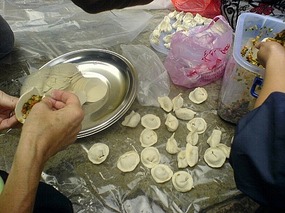
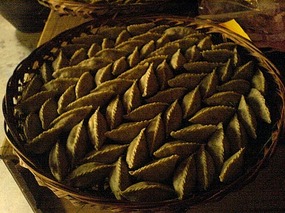
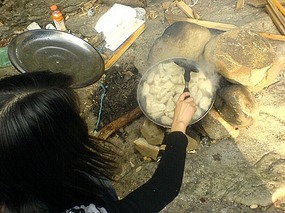
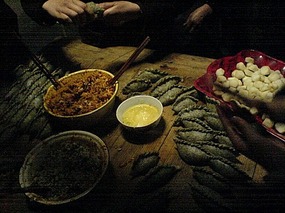
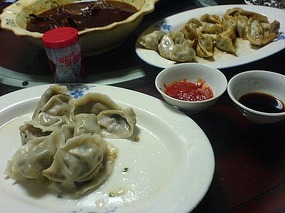
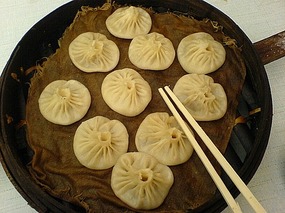
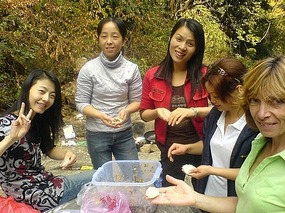
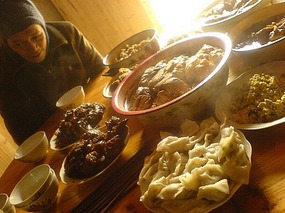
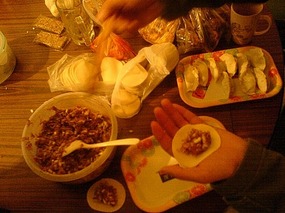
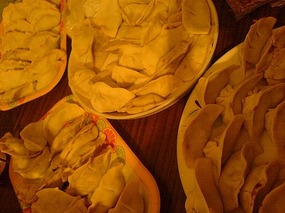

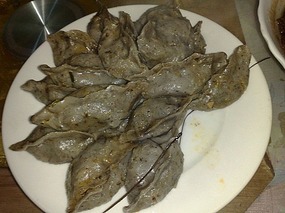

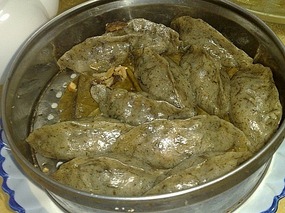
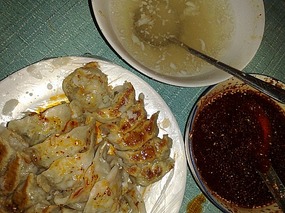

2025-05-22